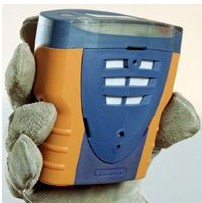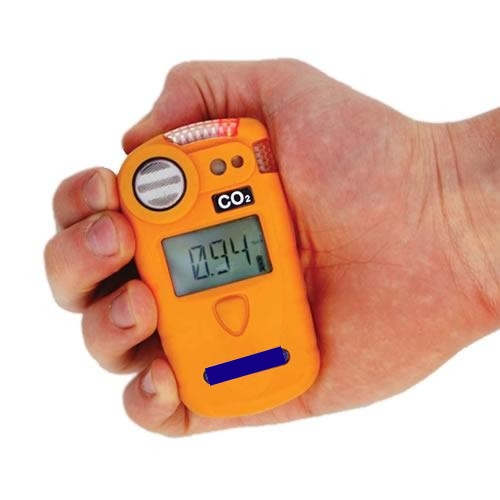Applications of Portable & Personal Gas Detectors
Protection against a very wide range of industrial gas hazards is offered with our personal and portable monitors. Both single and multiple gas monitoring options for Oxygen, Carbon Dioxide, flammables and a wide range of toxic gases ensures that there is a monitor properly suited to each safety application. Monitors offer trusted and comprehensive protection for workers on the move. Here are examples of industries that rely on the protection of our monitors:
OIL & GAS
Oil and gas plants require fast and reliable detection from the risks of toxic and flammable gases, with the option of easy maintenance. Gas hazards include Hydrogen Sulphide H2S, Carbon Monoxide CO and Oxygen O2 deficiency, along with flammable gases including Methane CH4, Propane C3H8 and Butane C4H10.
Sour crude oil produces Hydrogen Sulphide. Although it has a distinguishing odour, with increased levels, it will damage our olfactory nerve and so masks the danger from us. Methane is trapped above oil wells and in the oil removed, as well as being used to power turbines. It is crucial to measure Methane due to its flammability, as well as the fact that it causes Oxygen deficiency.
In flammable atmospheres, intrinsic safety and explosion-proof design is paramount. With ATEX and UL classifications, our portable gas detectors are trusted on a daily basis in these rugged environments. Not only do oil and gas plants have to be monitored but also crucially, any nearby workers’ accommodation.
It is vital that workers also carry out pre-entry checks before entering any confined spaces, such as storage vessels and platform legs. Toxic, flammable and Oxygen deficiency checks are imperative.
Portable & Personal Monitoring Solutions available: Clip, Gasman.

WATER INDUSTRY
Gas risks are associated both in waste and in the processing of waste water, in addition to the treating of extracted water back into clean water for consumption. Sulphur Dioxide SO2 and Hydrogen Sulphide H2S are toxic at low levels. Although it has a distinguishing odour, with increased levels, it will damage our olfactory nerve and so masks the danger from workers.
Chlorine Cl2 is a heavy gas and is easily absorbed by many materials, making it difficult to detect in storage areas. There is also a high risk of asphyxiation in confined spaces on water treatment plants and because of the build-up of Oxygen displacing gases, including Carbon Dioxide CO2 and Methane CH4. The flammable risk associated with production, storage and use of Methane presents further challenges for detection. Toxic, flammable and Oxygen deficiency checks are imperative.
Portable & Personal Monitoring Solutions available: Gasman.
Steel
Main gas risks in the steel industry are from: toxic gases including Carbon Monoxide CO, Ammonia NH3 and Sulphur Dioxide SO2; Oxygen O2 deficiency or enrichment; and flammable gases like Hydrogen H2.
In the basic Oxygen steel process, molten iron is poured into a steelmaking converter and a long water-cooled lance is lowered into the converter with pure Oxygen being blown through. The Oxygen combines with carbon, which leaves the converter as Carbon Monoxide gas. Nitrogen N2 and Argon may then be added for further refining. Enriched Oxygen, Carbon Monoxide and Oxygen depleting effects of Nitrogen and Argon threaten the safety of plant workers. In the coke oven process, coal is transformed into coke by intense heating. High levels of Carbon Monoxide and Hydrogen are produced here.
The gas mixture is used as fuel in other parts of the plant but harmful by-products have to be removed, such as Ammonia NH3, Naphthalene and Benzol. Sinter and iron production also produce such toxic and flammable gas hazards.
These harsh and potentially dangerous environments need rugged and reliable protection. Robust design, ease of use, dust filters and high resistance to Radio frequency Interference (RFI), mean that the portable and personal range is trusted by steel workers worldwide.
Portable & Personal Monitoring Solutions available: Gasman.

WINERIES & BREWERIES
From companies employing traditional approaches to those with sophisticated processes, the wine and brewing industries need to protect workers from toxic gas exposure and asphyxiation risks. Carbon Dioxide CO2 is the main hazard. It is toxic with no detectable warning signs and has the ability to displace Oxygen, causing asphyxiation.
Other toxic gases are produced during fermentation, cleaning and bottling, including Chlorine Cl2, Ozone O3, Sulphur Dioxide SO2, Hydrogen Sulphide H2S and Ammonia NH3.
With the employment of seasonal workers, gas detection must be simple and easy to use. One-button operation and preset alarm levels on our portable and personal instruments offers distinct advantages. Rigorous hygiene requirements mean that Ingress protection (IP) rating is important and our solutions offer IP65 against dust and low pressure water jets. IP67 offers added ability to withstand immersion in liquid (water, wine, beer and spirits).
Low sensor drift, extended battery life and long life CO2 sensors of over 5 years enable low maintenance, whilst inbuilt data and event logging capabilities reduce the burden on plant controllers.
Portable & Personal Monitoring Solutions available: Gasman CO2, Gasman.

